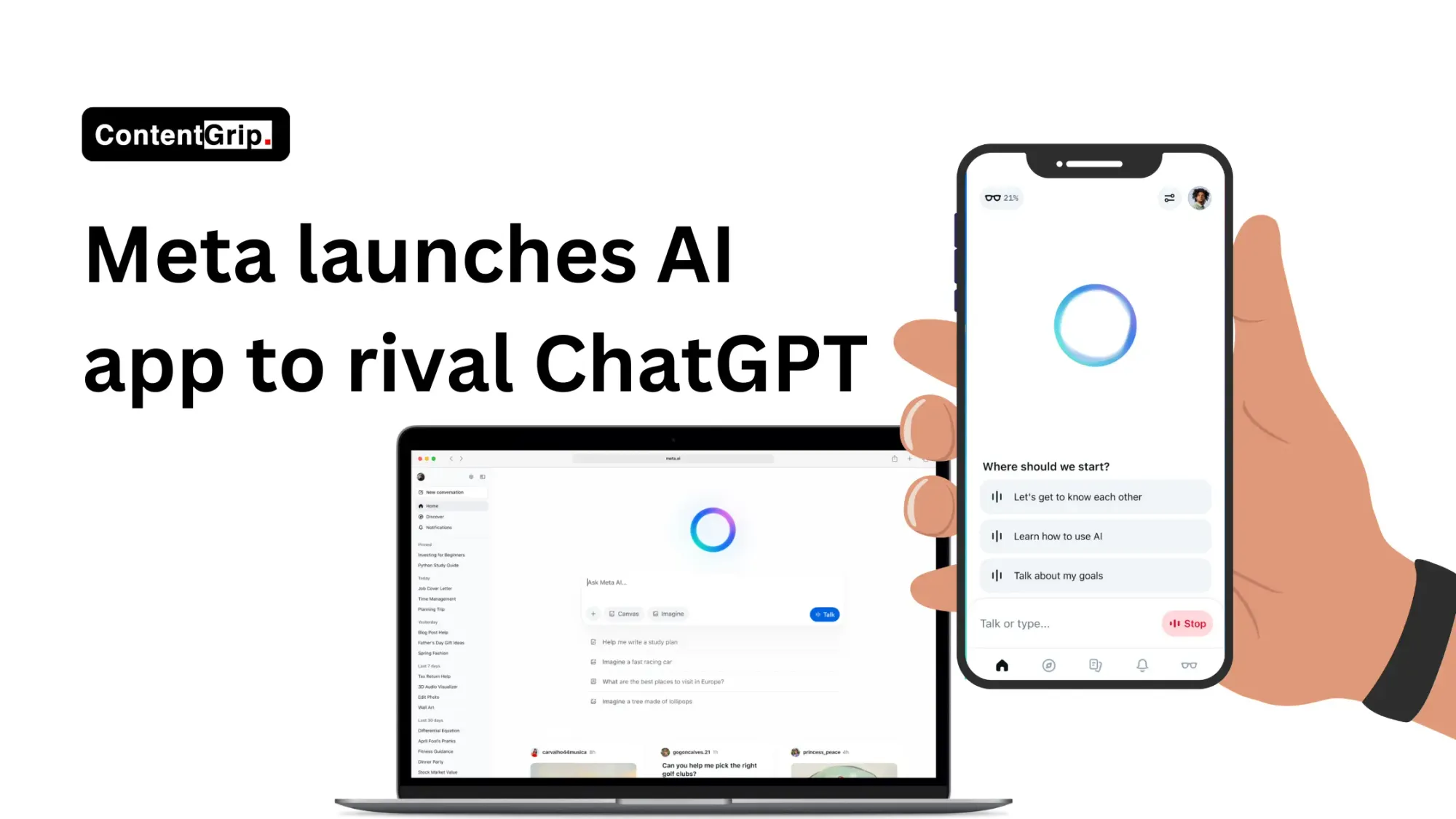Meta launches AI app to rival ChatGPT: what marketers need to know
The Meta AI app is live, with voice, image, and user profile capabilities—marketers, take note

Meta is doubling down on its AI ambitions with the debut of the Meta AI app, a standalone assistant designed to compete with ChatGPT, Claude, and Microsoft Copilot. This article explores what the launch means for marketers—and where Meta may hold an edge.
The company rolled out the app during its AI developer event, LlamaCon, positioning it as the next phase of its Llama 4-powered assistant strategy. Unlike Meta’s prior AI integrations embedded within Facebook, Instagram, and WhatsApp, this app breaks out into its own territory—available on iOS and Android in the U.S. and Canada, with test markets in Australia and New Zealand.
In classic Meta style, the new app leans heavily on personalization, pulling from user preferences, profile data, and in-app behavior to deliver tailored interactions. While its competitors emphasize real-time web access, Meta’s pitch is intimacy: an AI that "remembers" your habits and context, designed for ongoing voice and text conversations.
So what should marketers make of Meta’s AI shift? And could its social data advantage disrupt the current chatbot hierarchy?
Short on time?
Here’s a table of contents for quick access:
- What’s Meta’s new AI app all about?
- Where Meta AI stands out—and where it lags
- Three strategic takeaways for marketers
What's Meta's new AI app all about?
Unveiled at Meta’s LlamaCon, the Meta AI app is the company’s most deliberate entry into the consumer-facing chatbot race. Built on its newest large language model, Llama 4, the assistant supports text, voice, and image interactions in a standalone experience.
Unlike ChatGPT or Perplexity, Meta’s app isn’t yet connected to the live internet, limiting its use for real-time research or news. However, it compensates with its deep integration into Meta’s ecosystem. The AI can use data from users’ Meta profiles—including interests, likes, and behavior—to generate more personalized responses.
Meta says this helps the AI learn not only what users explicitly share, but also infer key preferences from contextual engagement. That includes things like your travel history, language learning interests, or how you typically phrase questions.
A “Discover” feed further sets it apart, showcasing trending prompts and giving users the option to remix responses—a move designed to spark creativity and social virality, not unlike Instagram’s Reels template system.

Where Meta AI stands out and where it lags
While Meta’s app lacks real-time web browsing—an edge that helps competitors like Claude and Perplexity deliver fresher results—it has one resource no rival can match: granular access to billions of users’ behavioral data.

This gives Meta a long-term personalization advantage that could outpace competitors in areas like emotional tone-matching, behavioral predictions, and brand affinity modeling.
However, the app is not without limitations. At launch, its personalized capabilities are restricted to users in the U.S. and Canada, with international users limited to more generic AI interactions. Additionally, the lack of live internet access may keep the app out of consideration for power users who rely on up-to-date research.
Still, with a built-in audience of 700 million monthly active users on Meta AI platforms, Meta is well-positioned to scale adoption rapidly.
Three strategic takeaways for marketers
1. Prepare for AI-enhanced social targeting
Meta’s Llama 4-powered assistant isn’t just about Q&A—it’s a testbed for more personalized, data-driven brand engagement. As Meta trains its models on user interactions, expect more predictive targeting and AI-generated ad content that reflects a user’s tone and preferences.
Marketers should prepare for tighter integration between content performance data and AI content generation across Meta’s ecosystem.
2. Use the “Discover” feed as a sentiment barometer
The app’s Discover feed functions like a social trends layer for prompt design. Marketers experimenting with AI-generated campaigns can treat this space as a testing ground for prompt styles, campaign themes, or product language that resonates organically—before rolling them into broader social strategies.
3. Expect competition to heat up in AI-powered user insights
With Meta AI growing as a standalone experience, we could see a shift from generic chatbot use to vertically integrated assistant experiences. Meta’s ability to link AI interactions with ad behavior, group memberships, and content engagement means richer insights for brands.
Marketers should watch for tools that bridge this assistant behavior back into audience analytics and campaign optimization.
As Meta pushes further into the AI race, its new standalone assistant signals more than just another chatbot—it’s a blueprint for deeply personalized, data-rich brand engagement. While the app has some catching up to do on live data access, its integration with Meta’s vast ecosystem could give it a unique edge.
For marketers, the message is clear: AI is no longer a back-end tool—it’s becoming the front line of customer interaction.
Now’s the time to experiment, adapt, and prepare for what personalized marketing looks like in the AI era.



